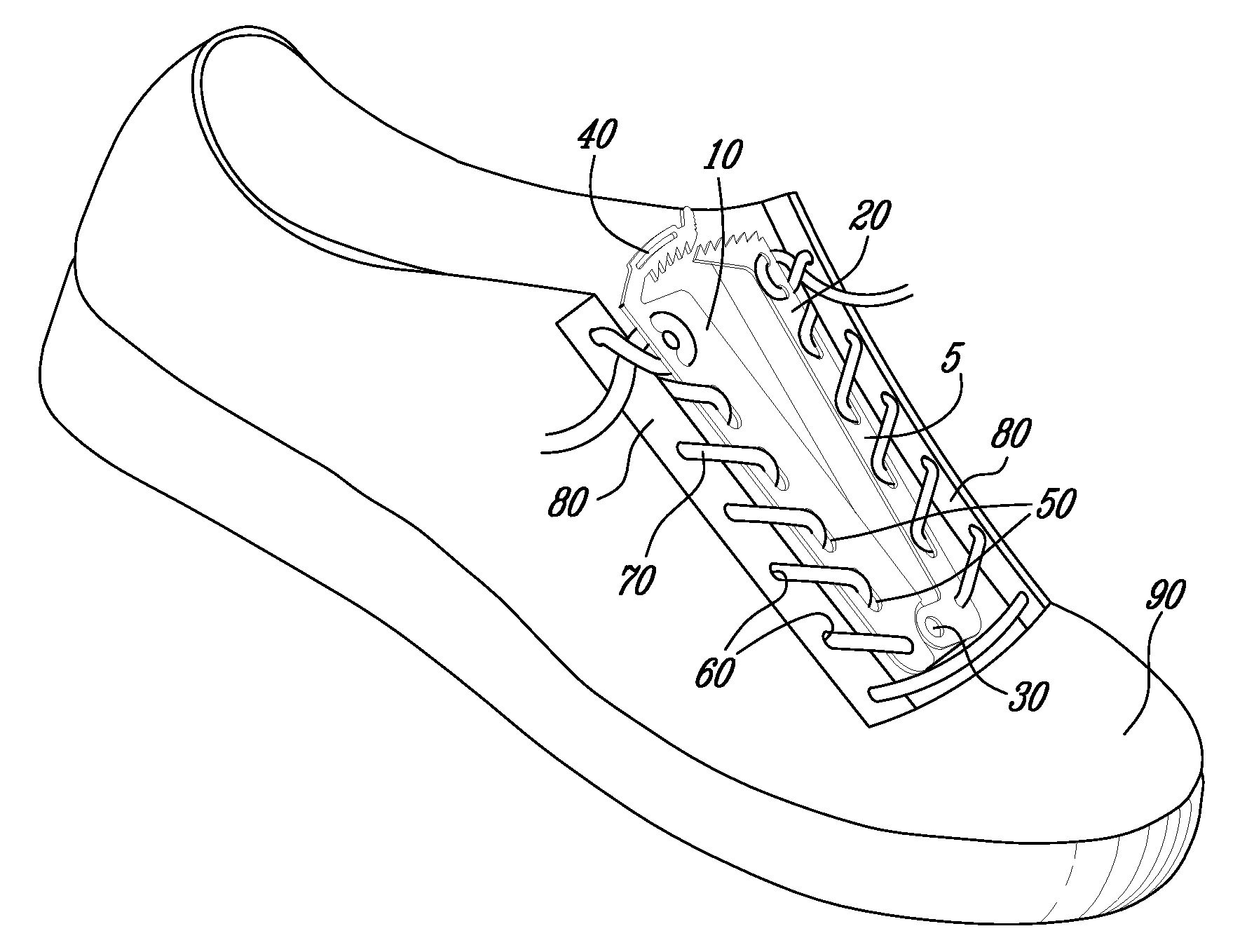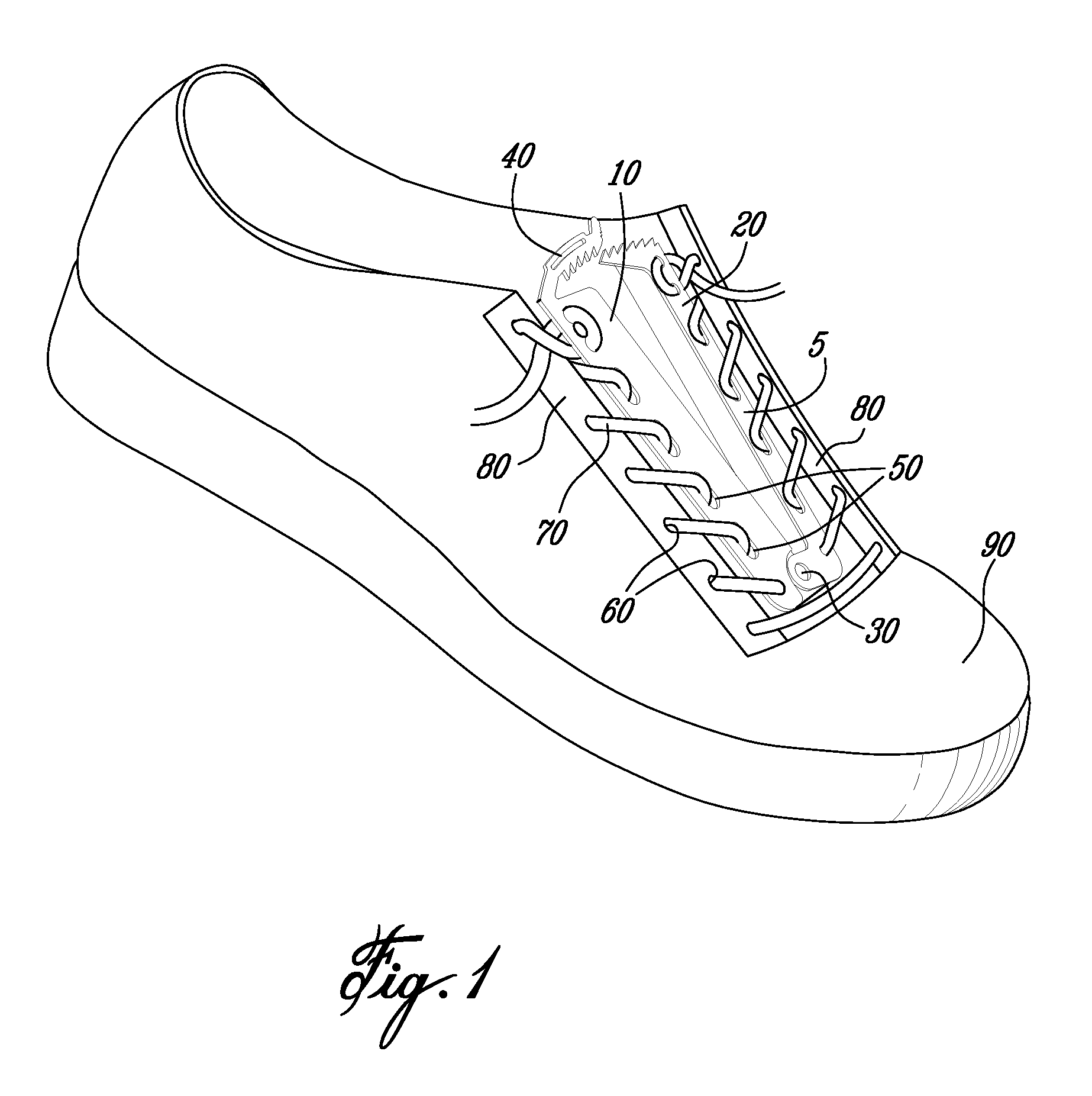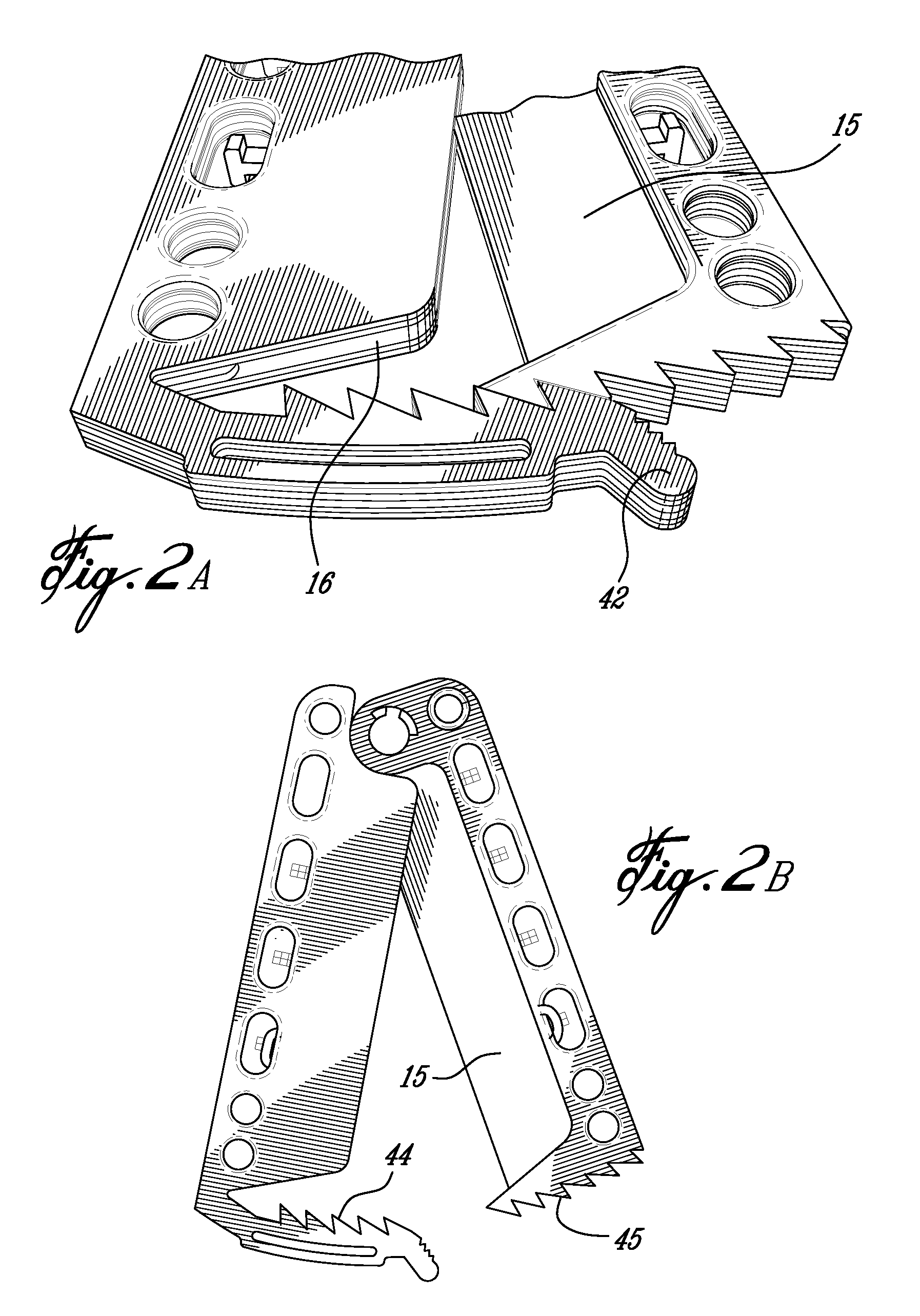Laced garment closure
a technology of laced garments and fastening devices, which is applied in the direction of uppers, bootlegs, stiffeners, etc., can solve the problems of losing the benefits of users, unable to uniformize the fit, and difficulty in tying shoes, so as to facilitate the fastening of laced articles and accelerate the fastening process
- Summary
- Abstract
- Description
- Claims
- Application Information
AI Technical Summary
Benefits of technology
Problems solved by technology
Method used
Image
Examples
Embodiment Construction
[0024]The invention comprises two substantially semi-rigid plates that are affixed firmly onto the shoe's upper portion either by permanent method at the shoe's manufacture or by the end-user using the shoe's own laces, or any other affixation means. The point of fixation is approximately in the region where shoelaces are usually laced into said shoe. In the insertion mode, the plates are apart thus permitting the shoe to extend to its maximum width. In the closed mode, user engages a retaining mechanism 42,44,45 on the plates 10,20 so that they are retained in close proximity to each other thus immobilizing the shoe on the user's foot.
[0025]To release, the user disengages the retaining mechanism and the plates are released into insertion mode. The user can then remove the shoe from her foot.
[0026]In the first embodiment of the present invention shown in FIG. 1, fastening element 5, comprises left plate 10, right plate 20, a plate joining mechanism 30 and a retaining element 40. The...
PUM
 Login to View More
Login to View More Abstract
Description
Claims
Application Information
 Login to View More
Login to View More - R&D
- Intellectual Property
- Life Sciences
- Materials
- Tech Scout
- Unparalleled Data Quality
- Higher Quality Content
- 60% Fewer Hallucinations
Browse by: Latest US Patents, China's latest patents, Technical Efficacy Thesaurus, Application Domain, Technology Topic, Popular Technical Reports.
© 2025 PatSnap. All rights reserved.Legal|Privacy policy|Modern Slavery Act Transparency Statement|Sitemap|About US| Contact US: help@patsnap.com



